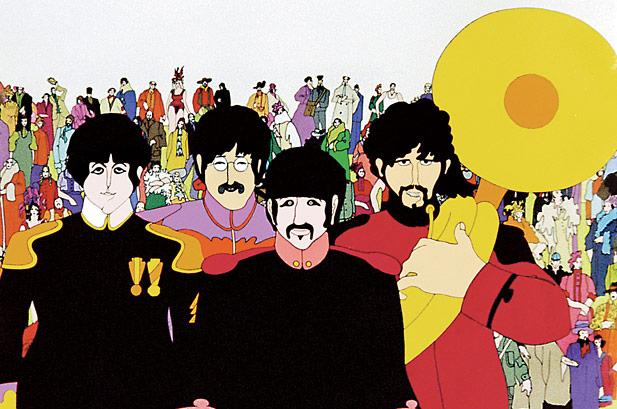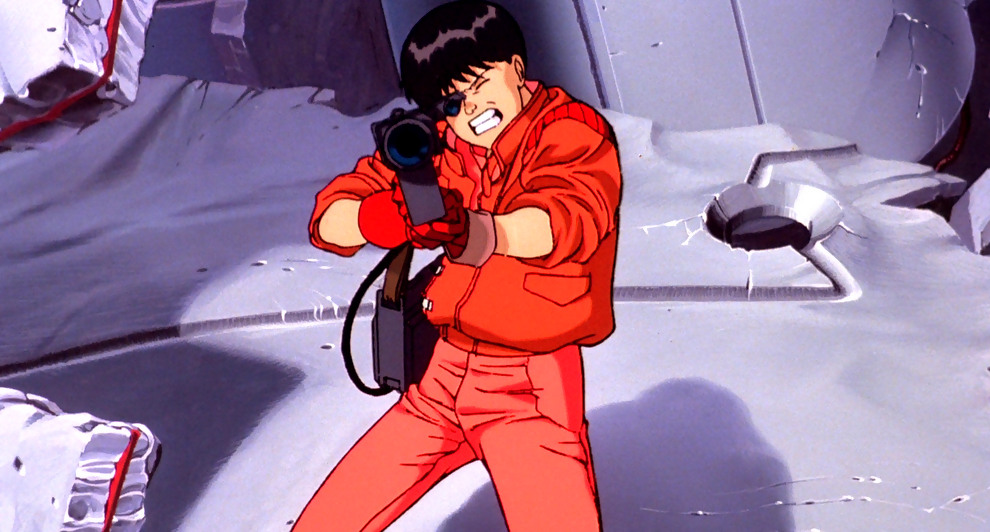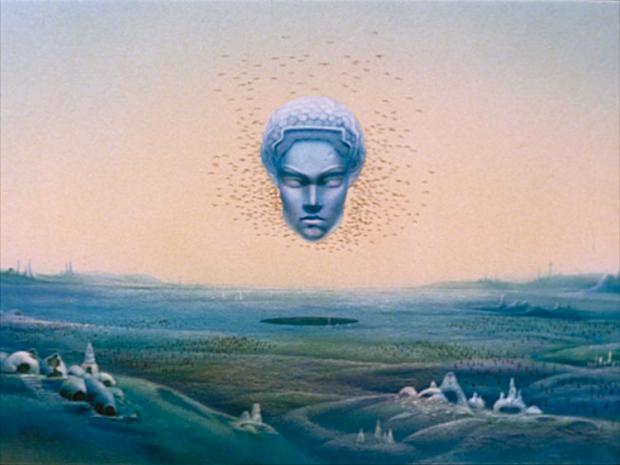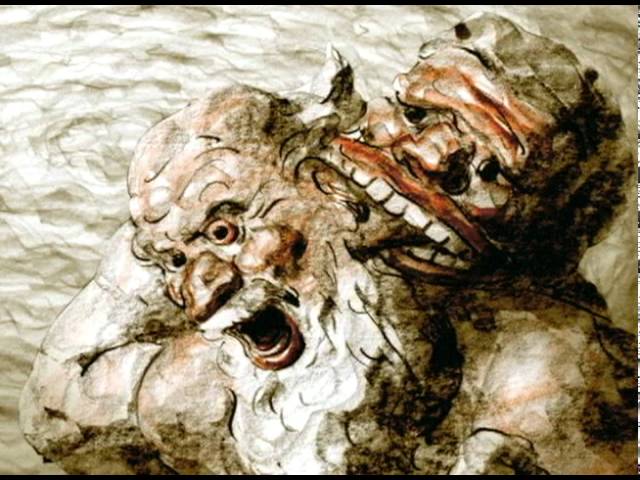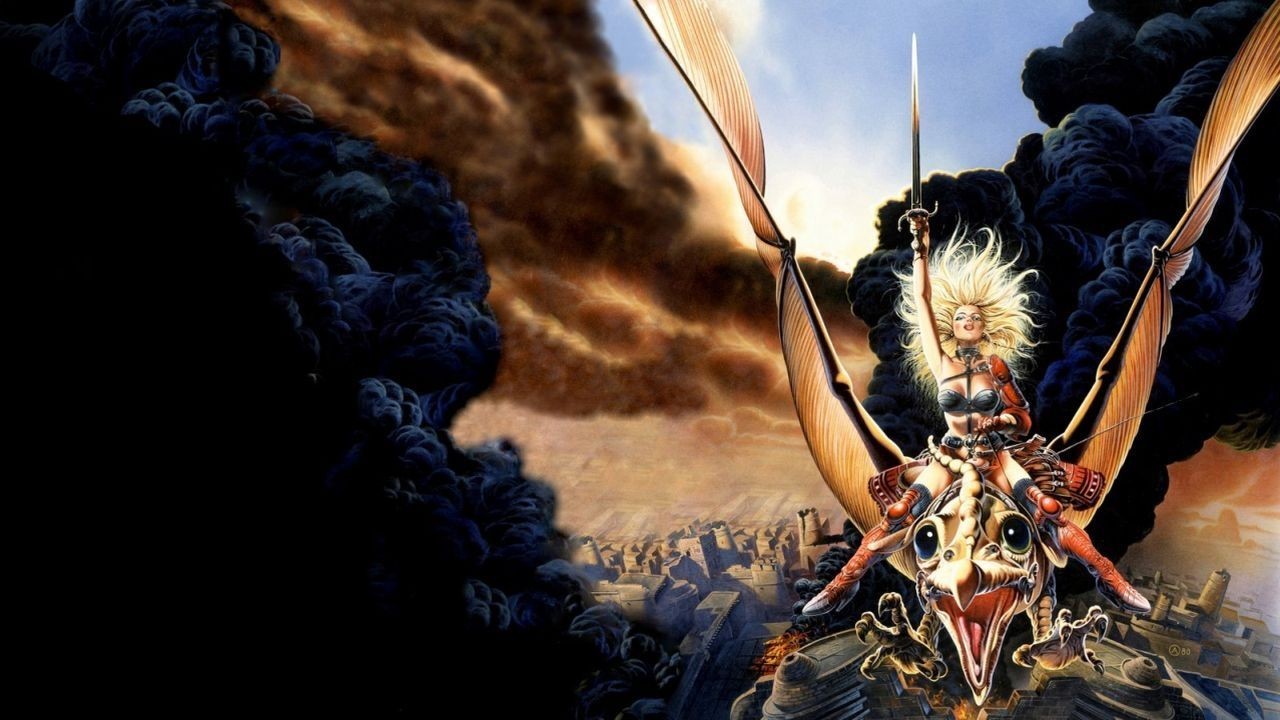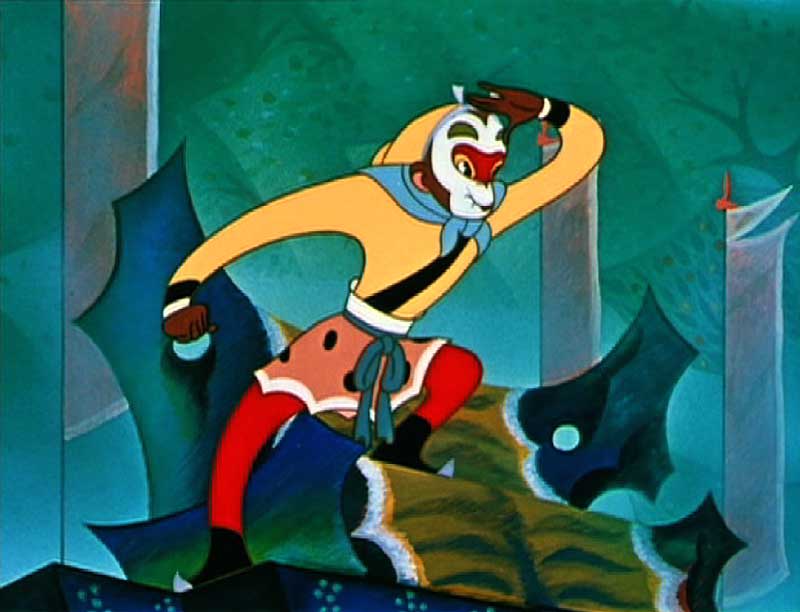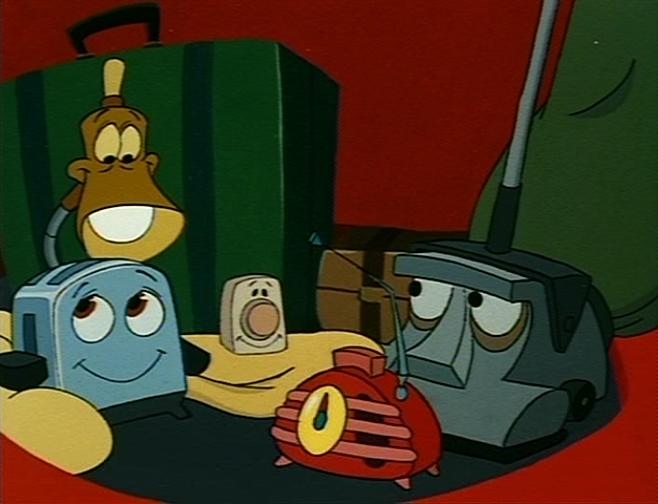18. Yellow Submarine (1968, George Dunning)
“We all live in a yellow submarine.” This is straight up, The Beatles on acid. The track itself was coming off of Revolver, which is generally regarded as the Beatle’s LSD album (along with Sgt Pepper of course). This came right after their pot album Rubber Soul. The Beatles were on to more serious drugs and more serious and existential works. Their music suggested you turn off your mind and float down the river.
Yellow Submarine is still one of the trippiest animations to come out of the late 1960s and that’s saying a lot. Perfectly paired with The Beatles music from the time, this film is vibrant, explosive, and very colorful. The film exudes the warmth of psychedelic drugs and for the most part, avoids the evils. Keeping the trip a good one through the duration.
20. Akira (1988, Katsuhiro Ōtomo)
No list of adult-oriented, freaky animated movies would be complete without the infamous, Akira. Akira is one of the first mainstream anime films to contain graphic violence. And graphic is putting it lightly. But that’s not even the really the most disorienting part of this film.
That comes later when nightmares enter into the real world and affect our main character. Body parts are blown off and re-generate, stuffed animals grow and begin to haunt the scene. It’s all revolving around New Tokyo, a super futuristic city run by gangs that have a penchant for property damage.
Akira is all about psychic energy and telepathy. It’s about physically manipulating the environment around you with your mind and the danger that can be associated with a powerful mind. The powerful and extremely creative minds behind the film adaptation of Akira didn’t think twice about the safety of their viewers.
21. Gandahar (1987, René Laloux)
Rene Laloux is back for a second time on this list with Gandahar, his final film. Also known as Metal Men, sometimes also known as Light Years, this was one that actually got a bit of attention in the United States. The English version was directed by Harvey Weinstein and produced by Bob Weinstein.
Isaac Asimov, the science fiction author was also involved in the process of translating the English version. The film is about a peaceful people who get attacked by metal men. Of course, these people don’t live on our Earth, they live on the bizzarro planet aptly named, Gandahar.
It features all kinds of species and creatures that look they may have spawned from some half-baked toddler’s drawings. The life on the planet is an immediate clue that this is a film thought up by a group of people with wild imagination.
This is yet another film that takes on life’s greatest issues. Animation is the perfect medium for exploring life’s biggest problems. Nothing is every really at stake, especially when you are exploring them on a planet far, far, away. There is complete freedom to dream up entire civilizations that conform exactly to a lesson that needs to be taught. Gandahar explores the need for peaceful society in a modern age and the tragedy of war. A story that might hit too close to home if it was in a familiar setting.
22. Midori-ko (2011, Keita Kurosaka)
Tokyo makes a great setting for dystopian, apocalyptic future. You have so much going on that just looks excellent when you lay it to waste. This is another film that puts itself in that setting, showing the city on the brink of collapse in muted colored pencil.
Taking ten years to complete, this 55-minute film was completed by a single person, Japanese animator, Kurosaka Keita. Obviously a labor of love and a personal project. That element of oneness really is on display as the film feels like it was made from a single nightmare. A terror of starvation and of appetite, emptiness is a feeling that comes to mind after viewing.
23. Heavy Metal (1981, Gerald Potterton)
A tongue-in-cheek cartoon, the tagline here being, “A Step Beyond Science Fiction”. This is an extremely silly attempt at recreating a popular comic book for the screen. Worked on by several different animation studios simultaneously to rush a the release forward, it definitely lacks any sort of cohesiveness.
It’s full of violence and nudity and was exactly what people wanted in 1981. It made around $20,000,000 dollars and has gone on to become a cult classic. The 80s were really a strange time in the world of animation.
Not many people would argue that this is actually a well-made film. But it has redeeming qualities that set it apart. The animation coming from several different places ends up being really interesting to look at. The soundtrack is absolutely 80s and fits perfectly with the nutso pictures onscreen. Most importantly you have a some comedians (a couple who are no longer with us) that make this thing stand out. John Candy, Eugene Levy, and Harold Ramis all grace the work with their voice.
24. The Monkey King (1964, Wan Laiming)
Sometimes called Havoc in Heaven, this is one of the most popular Chinese films and the only one on this list. The Monkey King is based upon the works of the Ming Dynasty and features a score reminiscent of the Peking Opera.
It is quintessentially a Chinese film. There aren’t a whole lot of films to come out of the country in the 1960s and even less that are such great examples of creative animation. The Monkey King has stood the test of time and remains an international treasure.
25. The Brave Little Toaster (1987, Jerry Rees)
The Brave Little Toaster is a favorite for many in Generation Y. Someone had gotten sick of animated talking dog and cat movies for children and thought it a better idea to draw up talking household appliances. A precursor to so many animated films seen today; this film was worked on by several of the founding Pixar employees.
The life brought into these typically “dead” pieces of everyday life was extremely liberating. Children had known all along that a thing did not need to be alive to give it a voice. The animators finally nailed down that role of exceptional imagination and turned out a fantastic film.
But The Brave Little Toaster isn’t all sunshine and talking electric blankies. The film gets real dark. Toaster and his friends are on a quest to find their master, the guy who keeps them all in operation and happy. Whether the appliances are in the scary woods or the scary junkyard, the choice to use appliances instead of living creatures gave the animators the freedom to rip them apart; onscreen in front of children.
While this may have been horrific, it only serves to further enforce the lessons the film is teaching. It taught a lesson of friendship, family, and being kind to everyone you come across no matter what their shape or size. The most important lesson that can be taught to our children.
Author Bio: Ben Sprowl is currently living and working in Los Angeles. He has been editing video for the past 10 years or so; studied film and video production at Ball State University.
